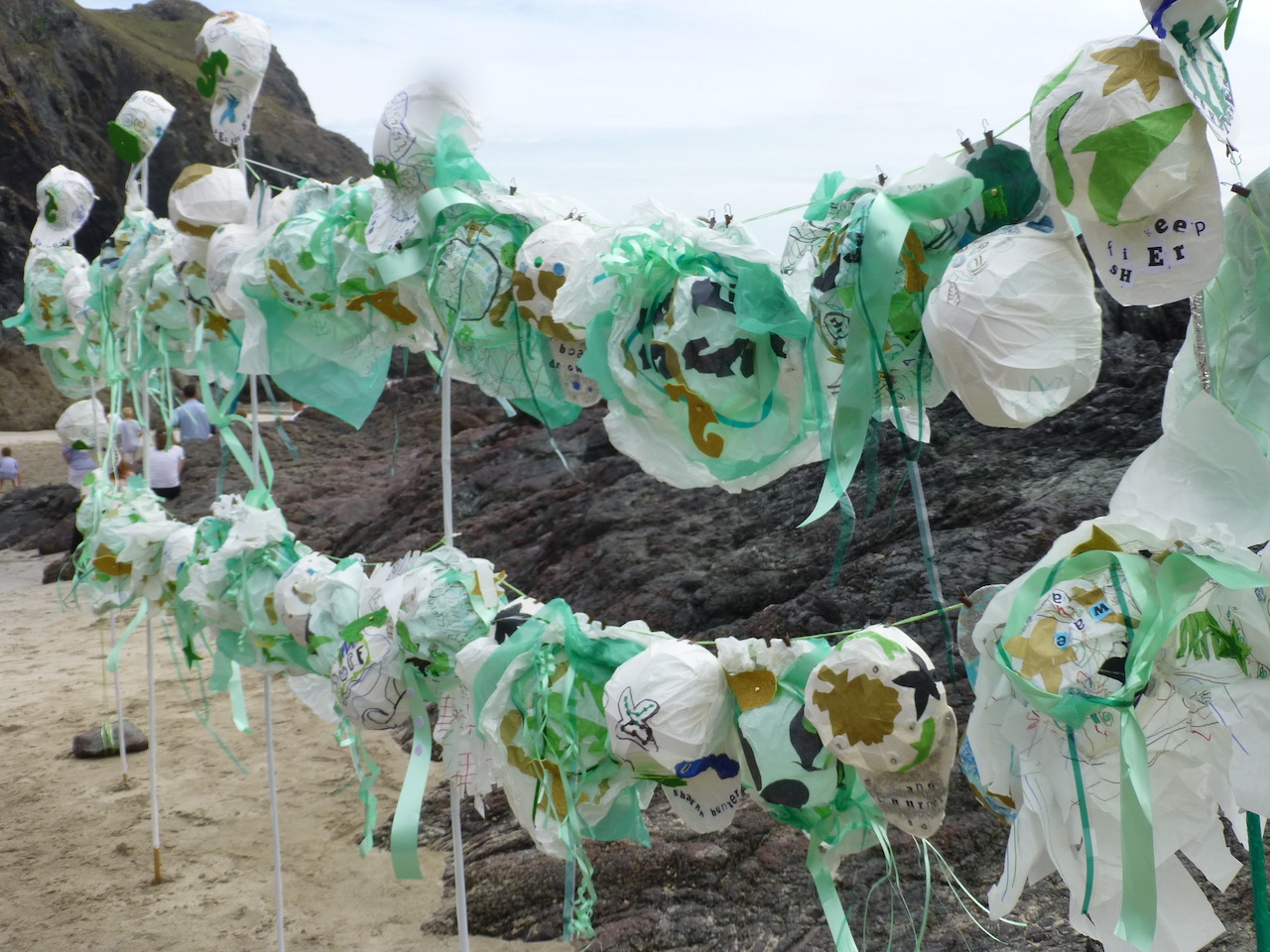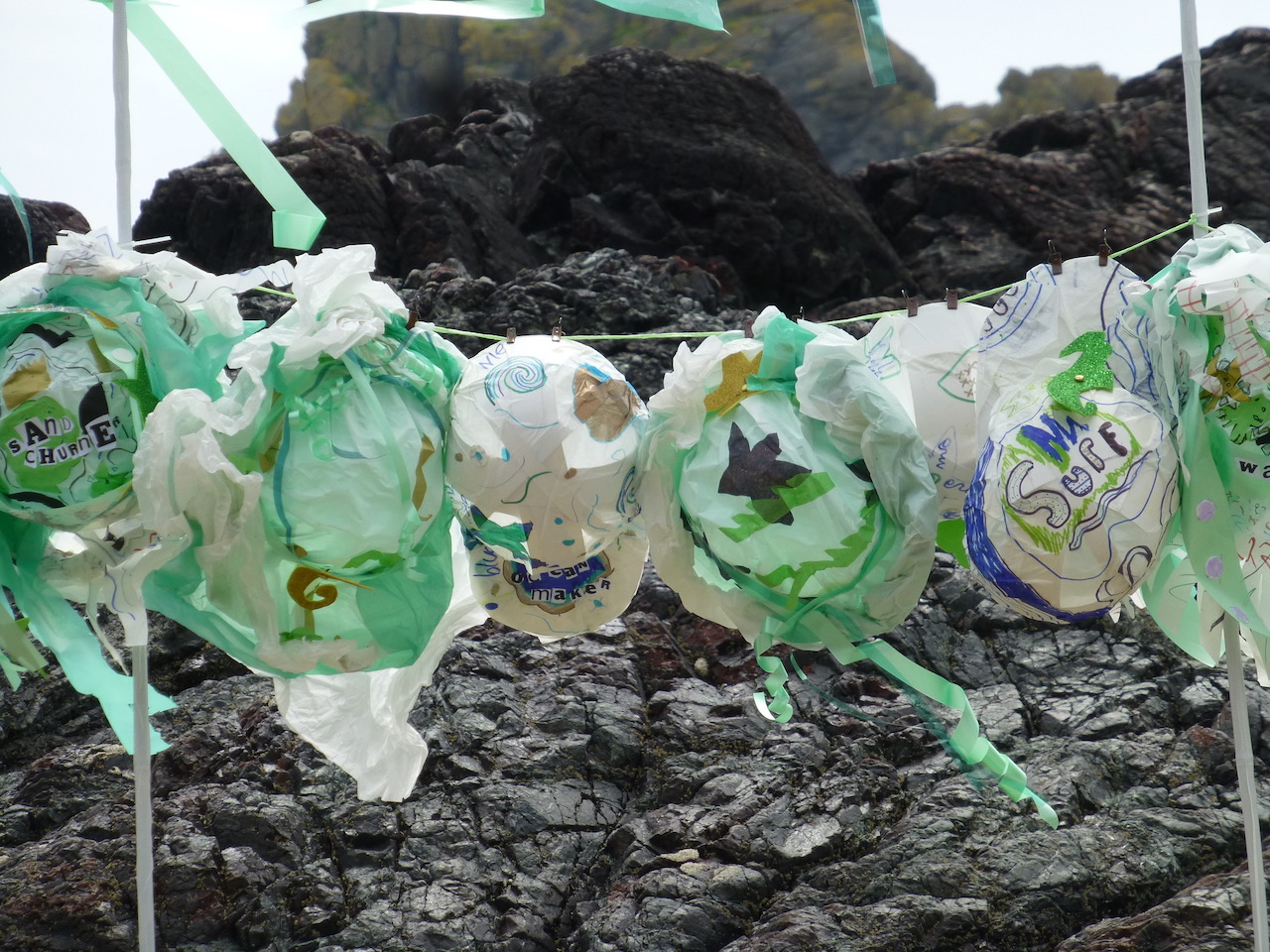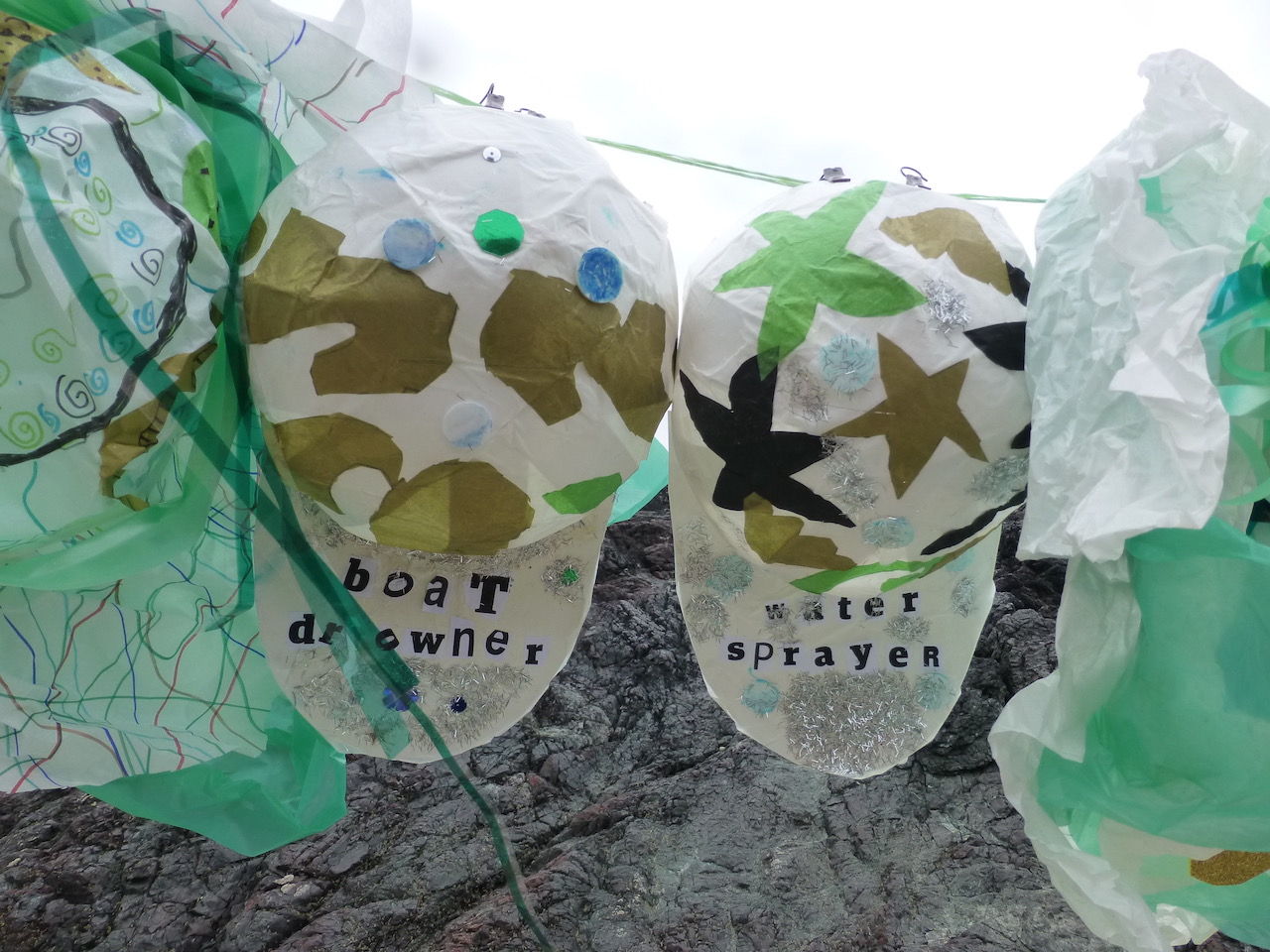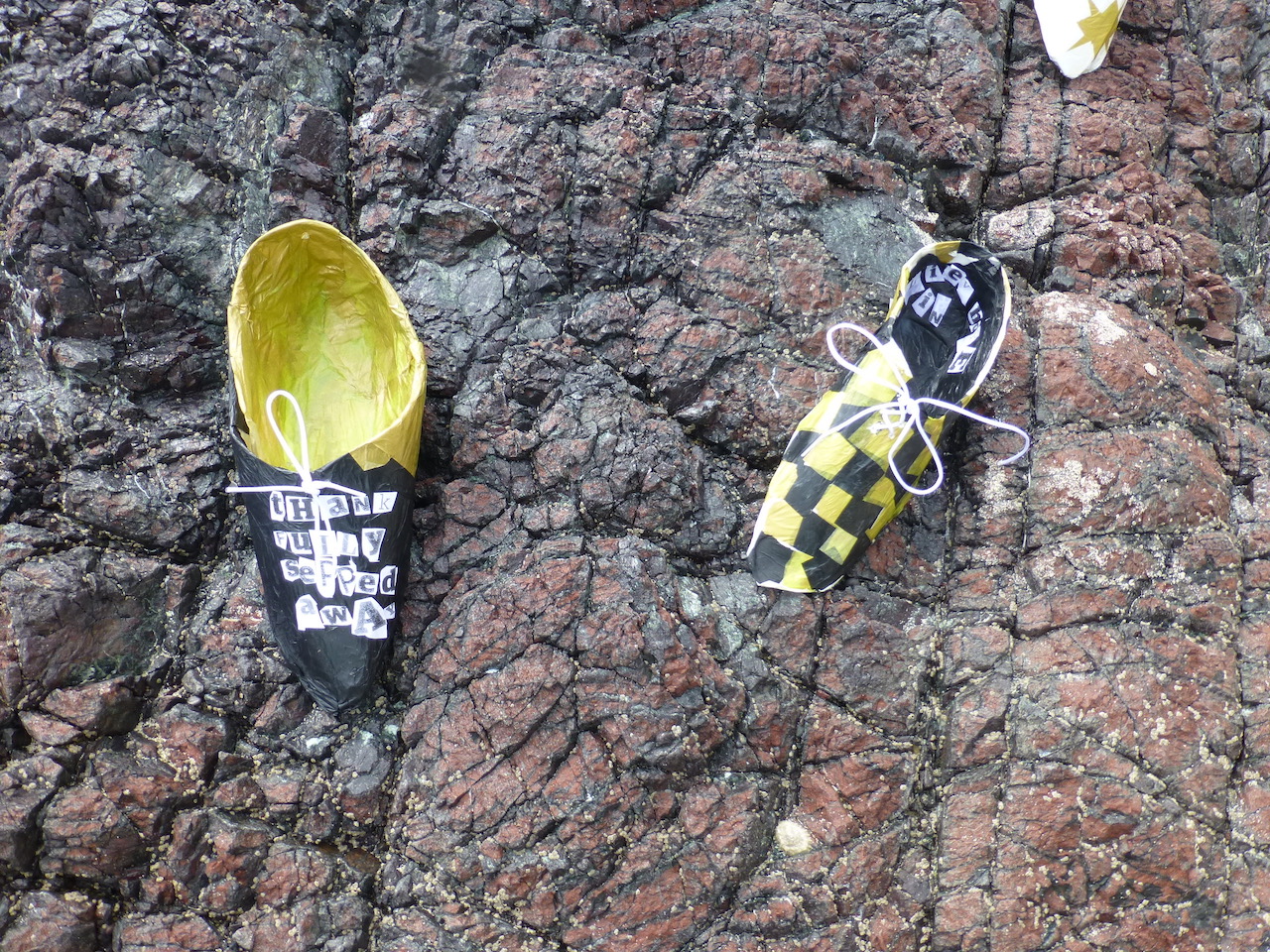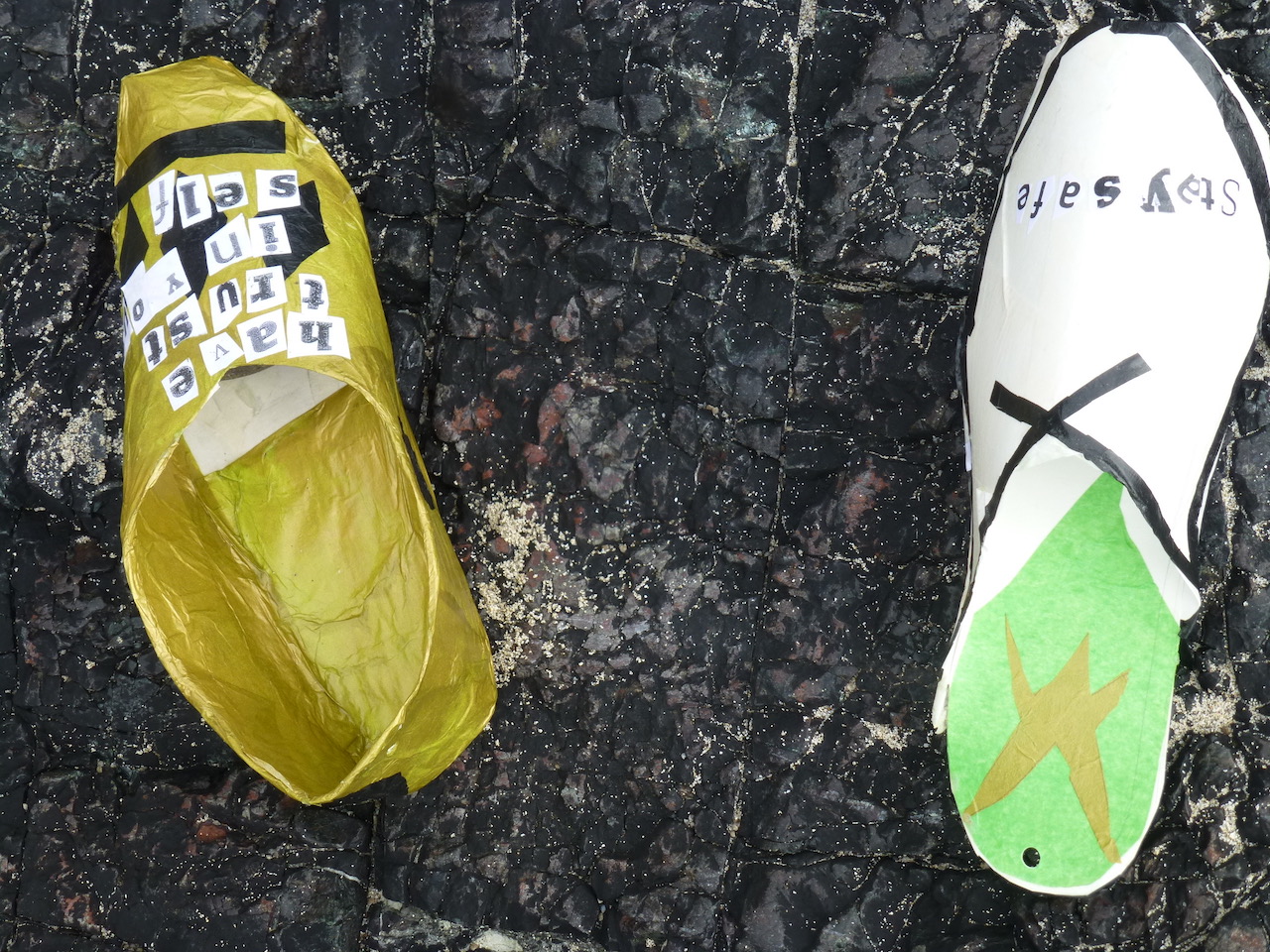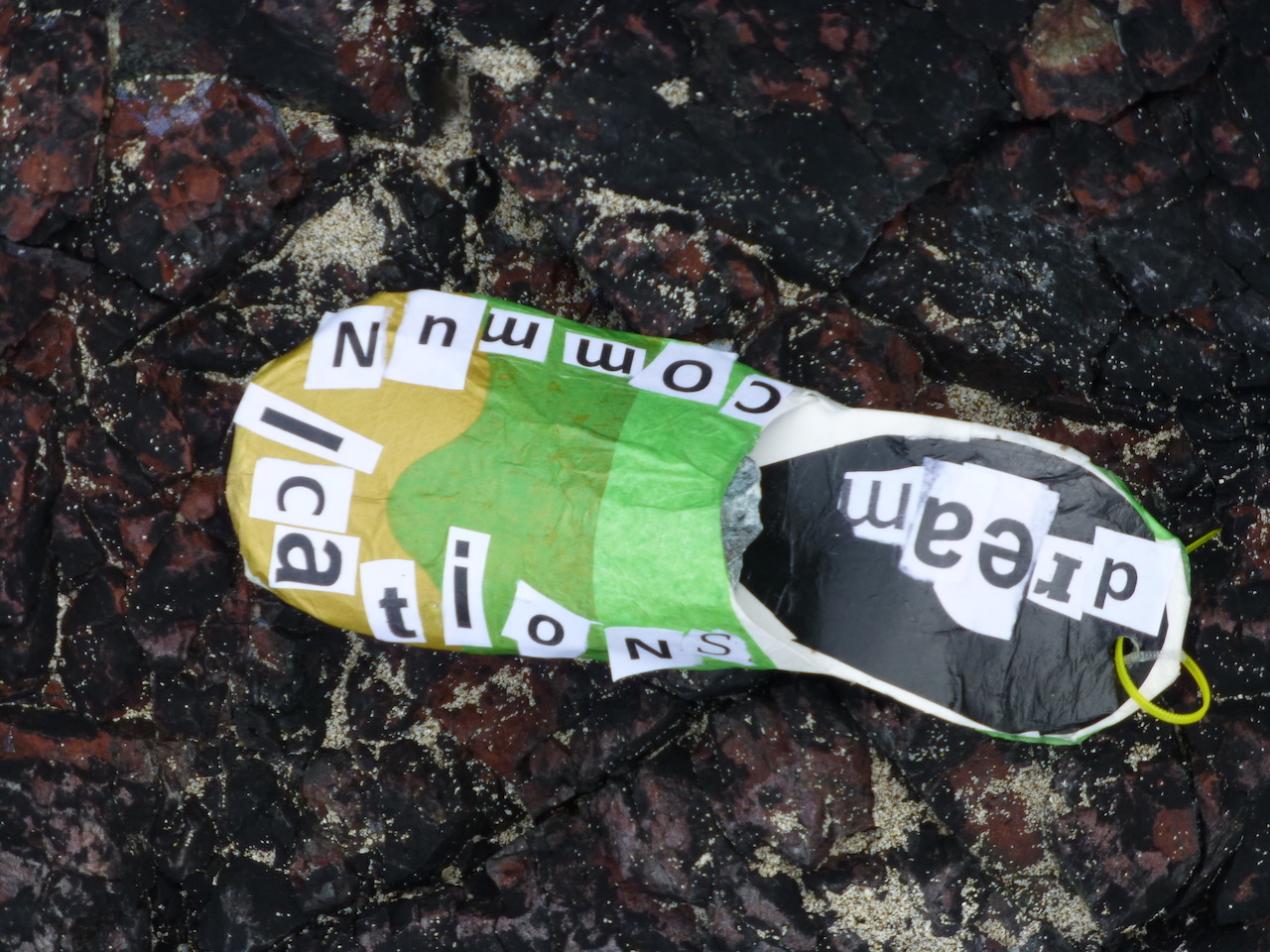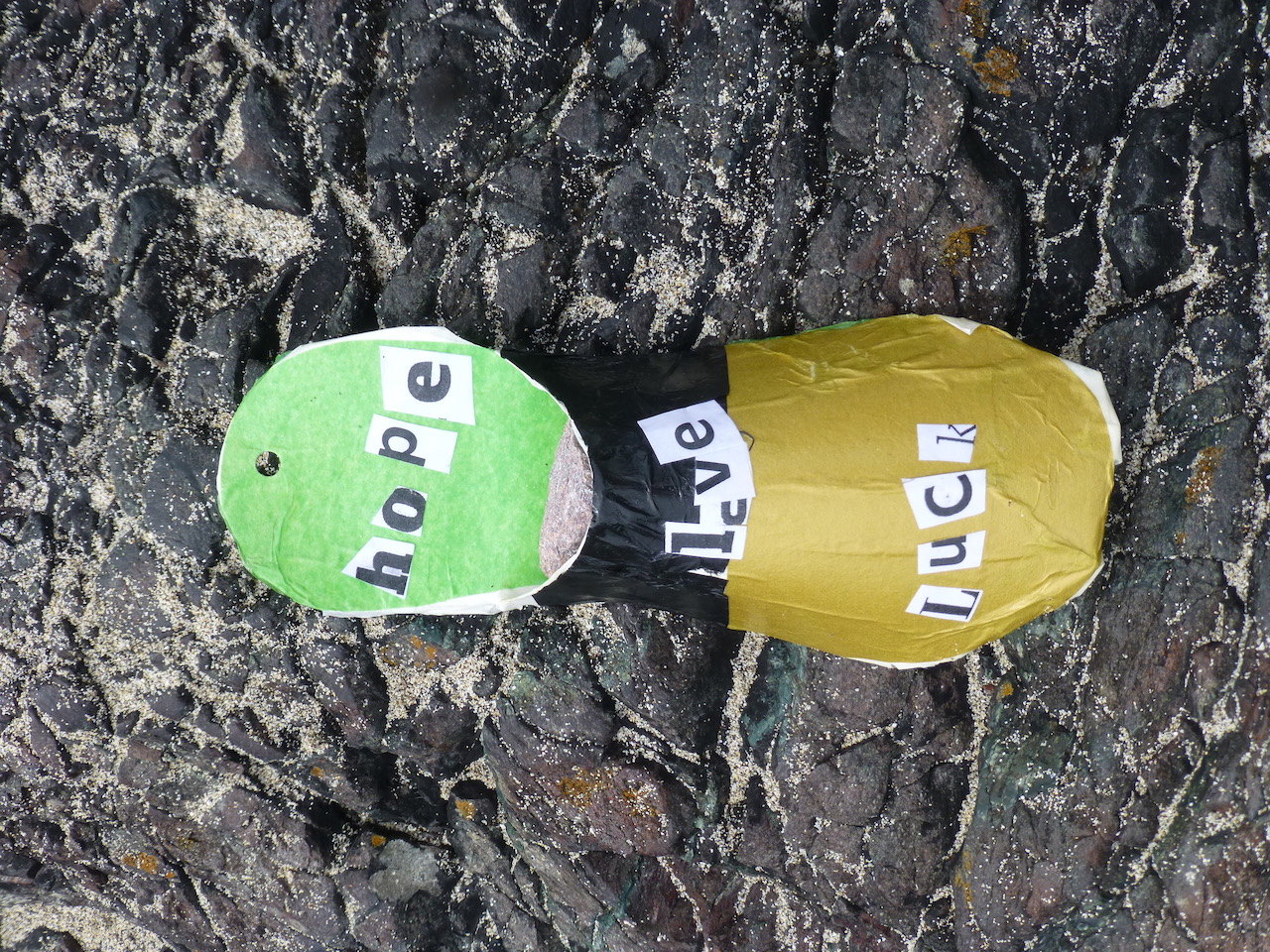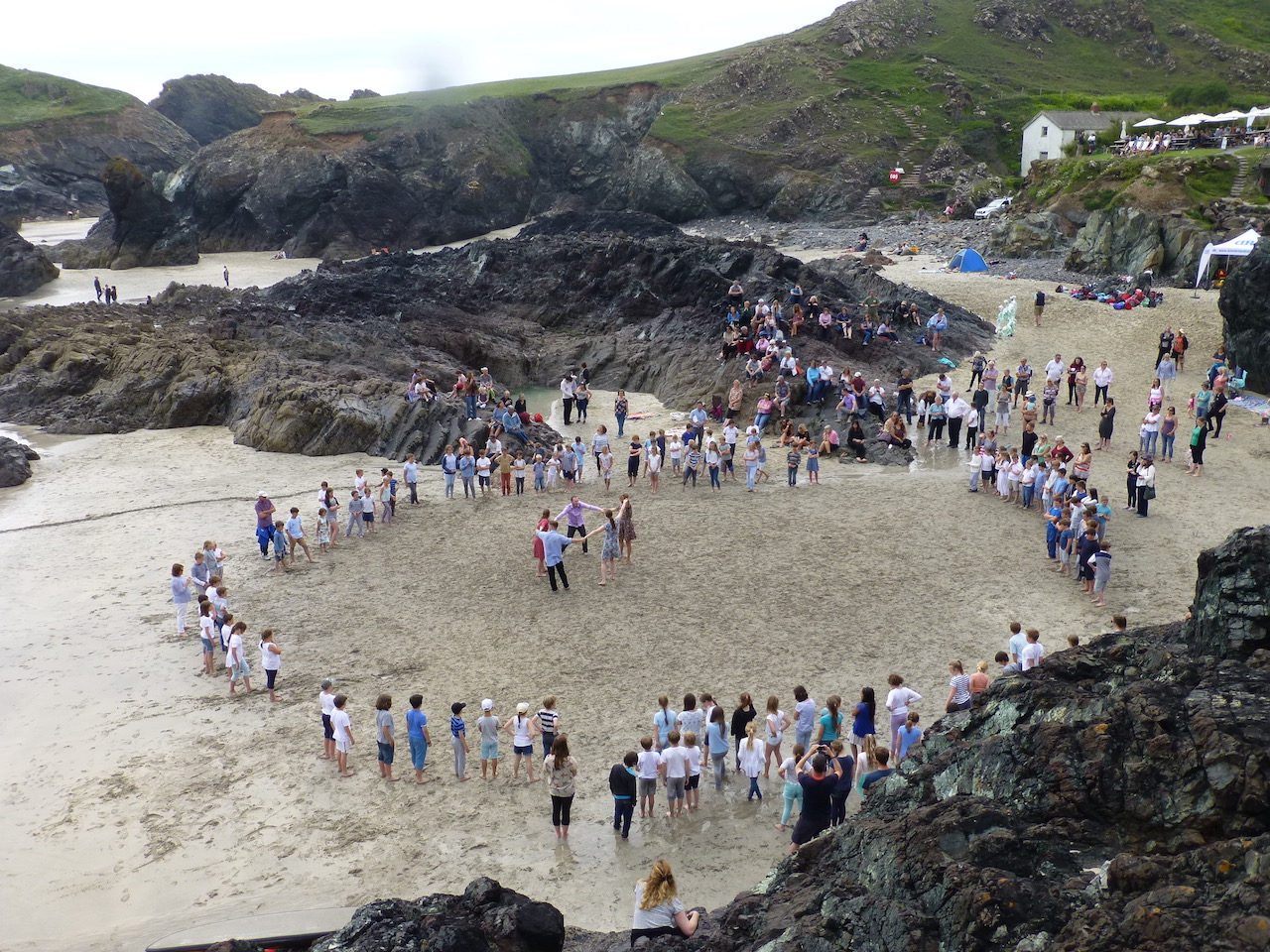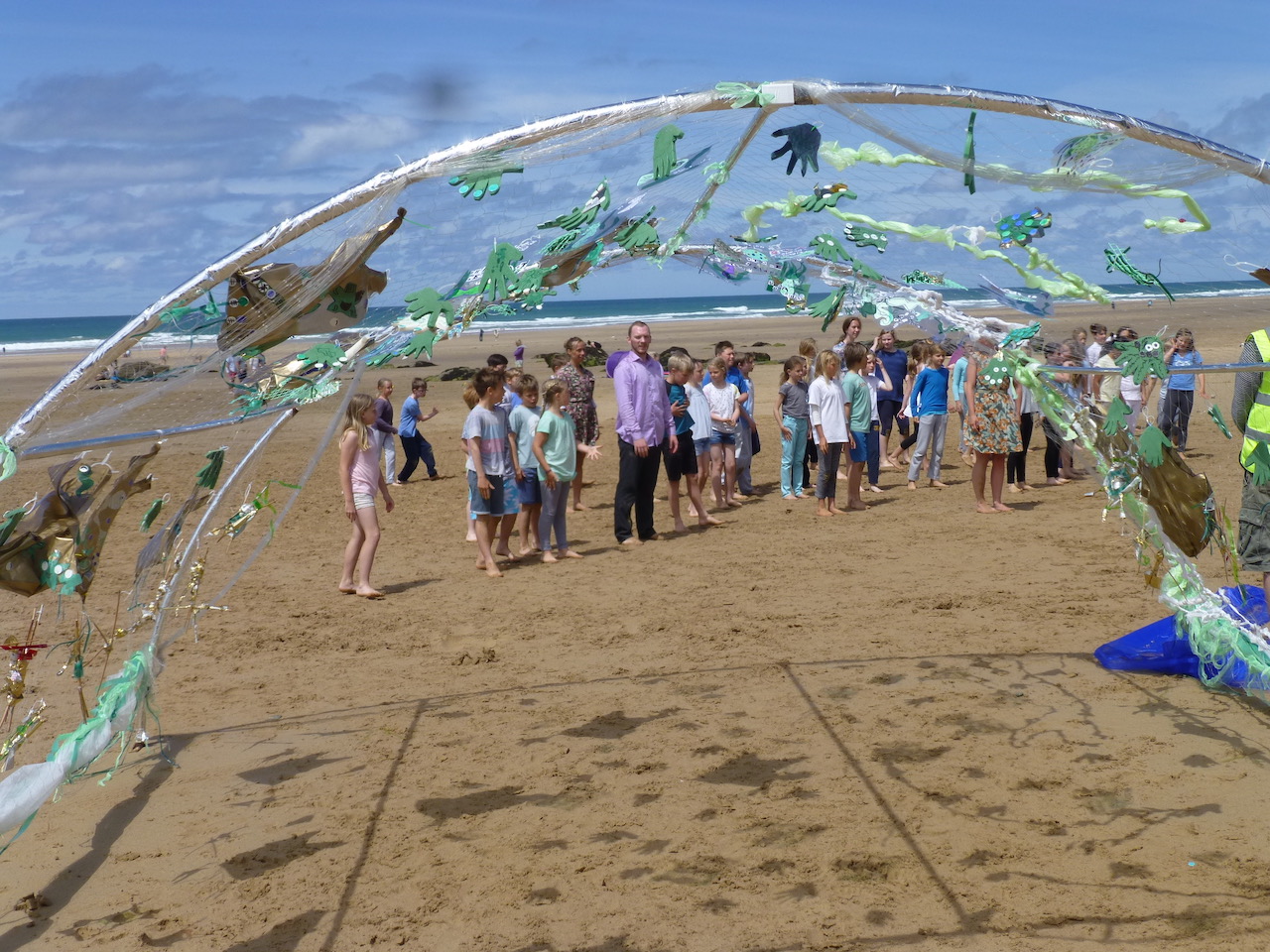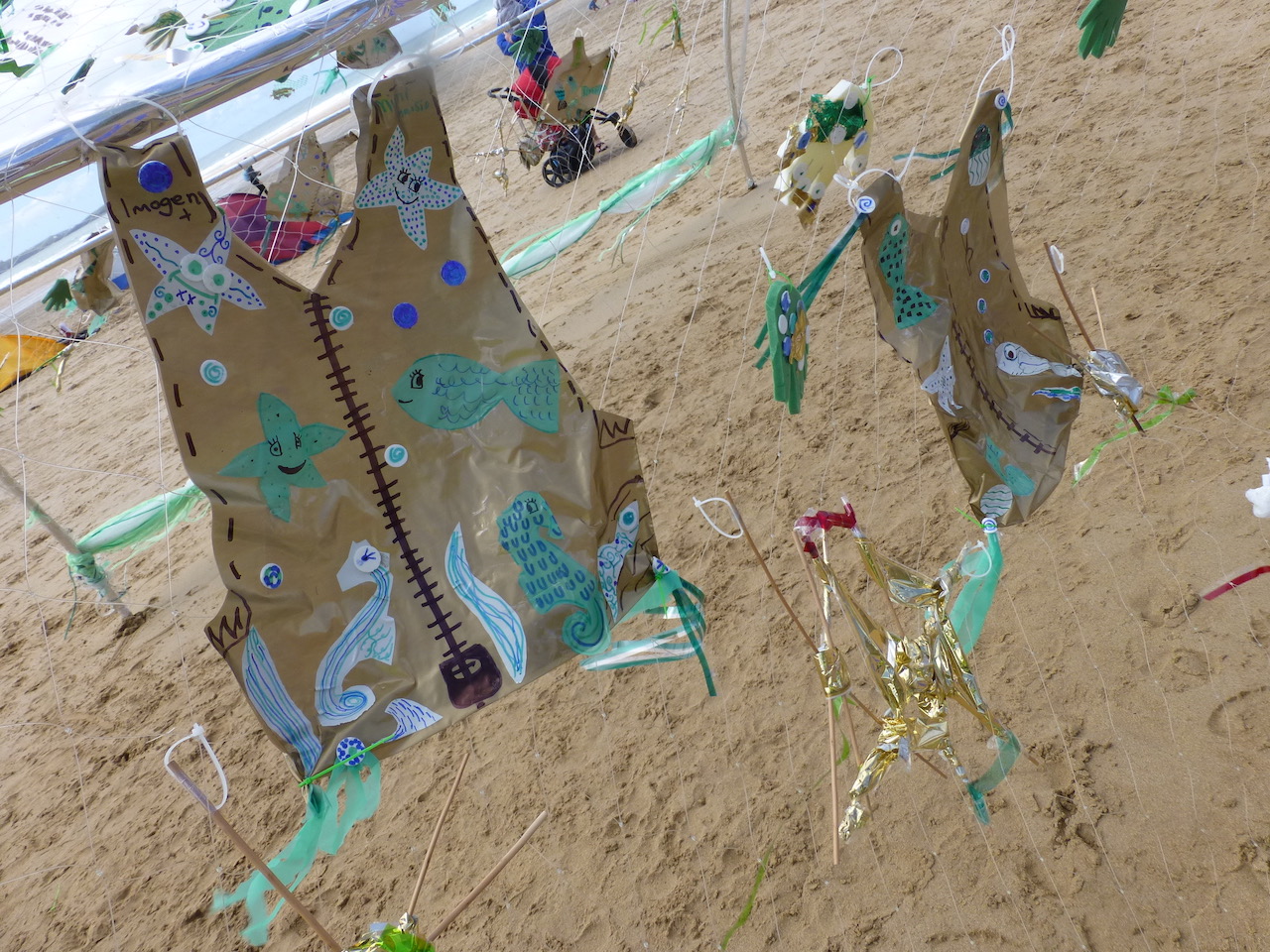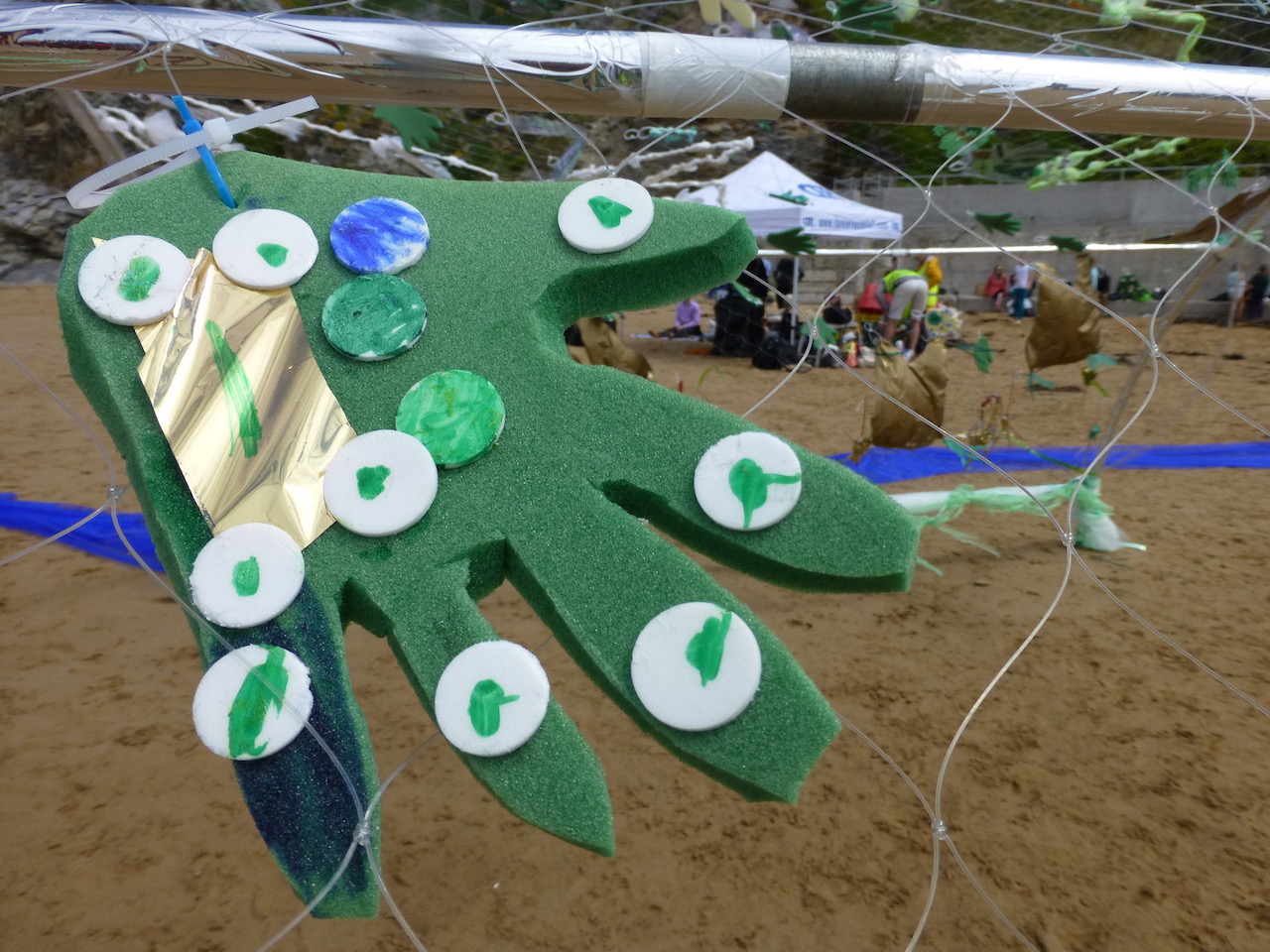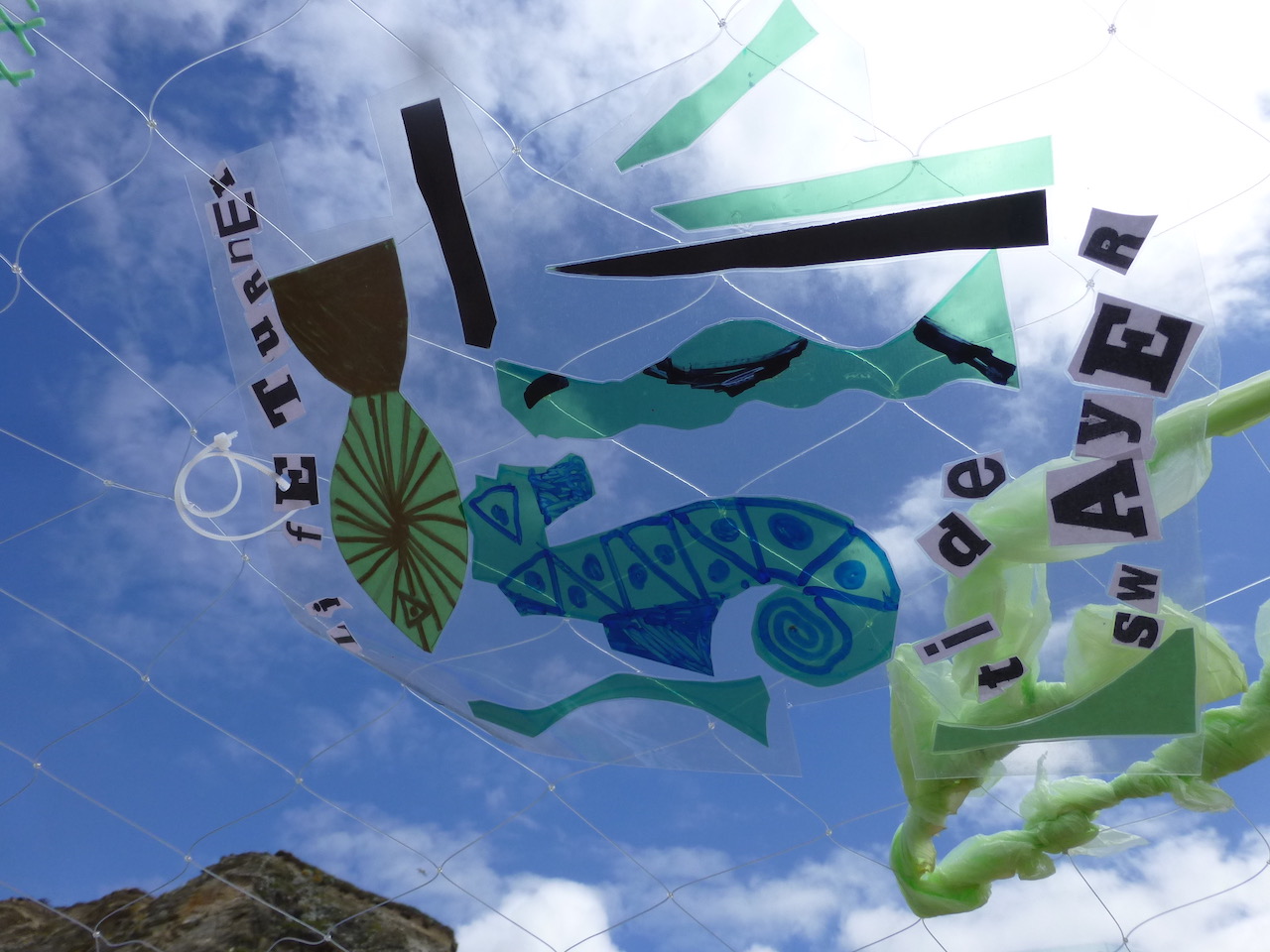Shoreline was first performed as part of SALT 2016 and then again as part of a Pinch of SALT 2017. It has been performed across Cornish beaches at Kynanace Cove, Sennen Cove, Watergate Bay, Praa Sands, Porthmeor Beach St Ives and Bournemouth Beach.
Choreographer Simon Birch worked with a team comprising dancers, a composer, a writer, a marine biologist and myself as visual artist.
Shoreline explored our connection with the sea. Powerfully danced by six professional performers right on the edge of the sea, audiences were completely immersed in the event and may have even got wet feet! The choreography took the dancers into the water, onto the sand and rocks along shorelines, supported by a choir made up of local choral groups and individuals.
‘It is amphibious – danced in the water, as well as on the sand and rocks, to live choral music. It is a metaphor for the storms we all endure, the moments of tranquillity we seek and the borders and boundaries we fear or dare to cross. Shoreline is an ode to the coastline, and all that it means to us.’
Simon Birch
